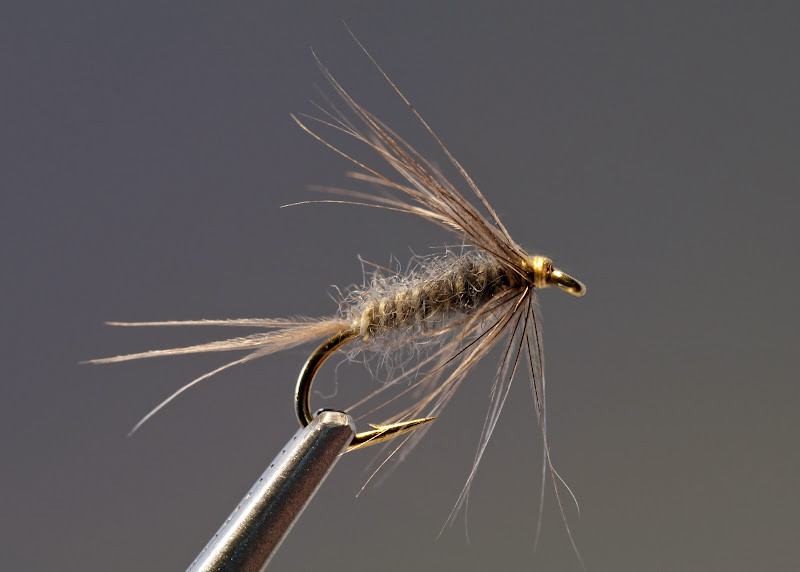Pearsall's and Twisted Thread Dubbing
Posted: Wed Mar 05, 2014 2:55 pm
I have been tying these Blue Duns at the shows this year. I have been showing the twisted thread body and pre-made Clark's block method.

This particular one was done by the twisted thread technique that I use. When I do a split thread body, I actually noodle dub one half of the thread. I dub somewhat tightly near the hook (this will be the the rear of the fly) and less tightly or not at all further down the split thread (this will be the thorax the body). This way I can get a nice tapered shape without increasing the amount of dubbing from rear to front to ensure I retain translucent properties. Pearsall's is a 3-strand thread as most of you know. This actually gives more control to the tier. Untwisting the strands gives you the 3 strands. An uneven split. With the twisted technique you can adjust the amount of thread that shows through by which grouping of strands you dub. Dubbing one strand hides that strand and leaves two undubbed in the twist. This allows more thread to show through the dubbing. Dubbing two strands, leaving one undubbed, makes the dubbing more prominent within the twisted body.
The fly above was done by dubbing one of the 3 strands as described.

This particular one was done by the twisted thread technique that I use. When I do a split thread body, I actually noodle dub one half of the thread. I dub somewhat tightly near the hook (this will be the the rear of the fly) and less tightly or not at all further down the split thread (this will be the thorax the body). This way I can get a nice tapered shape without increasing the amount of dubbing from rear to front to ensure I retain translucent properties. Pearsall's is a 3-strand thread as most of you know. This actually gives more control to the tier. Untwisting the strands gives you the 3 strands. An uneven split. With the twisted technique you can adjust the amount of thread that shows through by which grouping of strands you dub. Dubbing one strand hides that strand and leaves two undubbed in the twist. This allows more thread to show through the dubbing. Dubbing two strands, leaving one undubbed, makes the dubbing more prominent within the twisted body.
The fly above was done by dubbing one of the 3 strands as described.